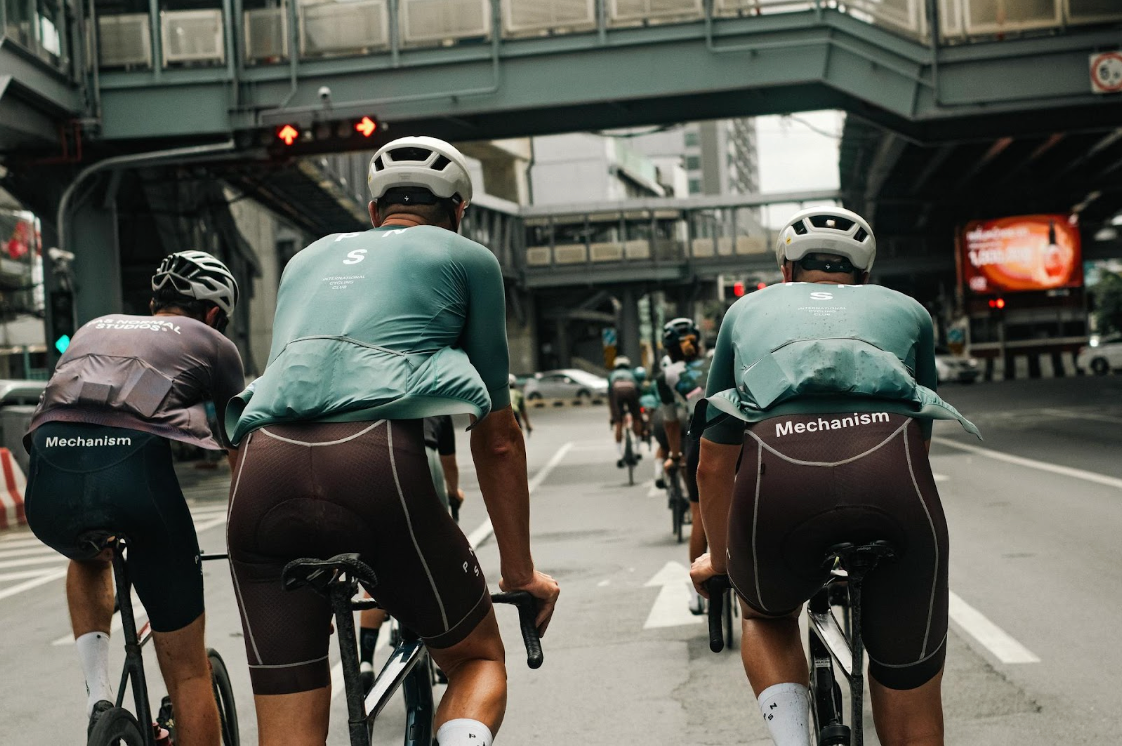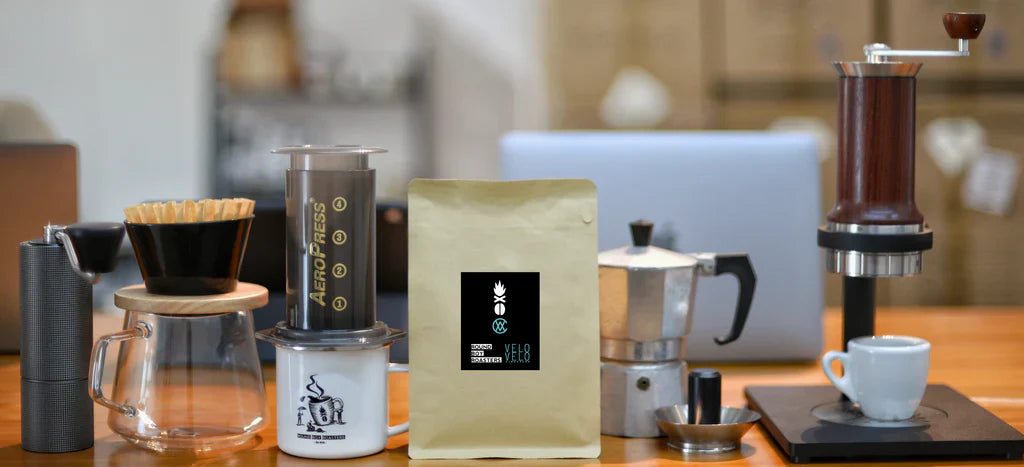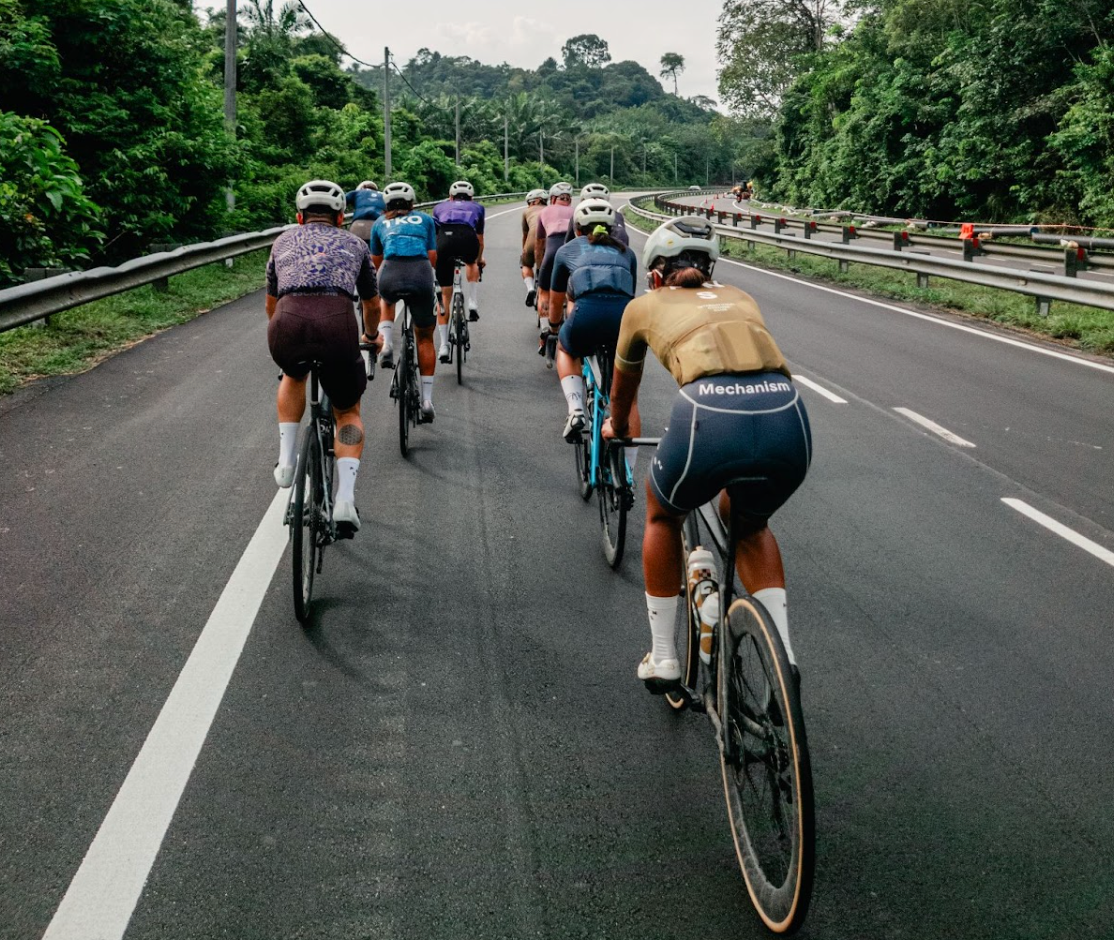
How to Wear Cycling Bib Shorts | The Ultimate Guide
Cycling bib shorts are essential for individuals that enjoy cycling often. They are widely known for their ability to provide the rider with a comfortable ride for both men and women. In this article, you will read more on why you should get a pair of bib shorts, how to wear them and tips on styling. We will also cover how to choose the best pair for your needs.
Why Are They Called Bib Shorts?
If you’re just getting into cycling, the term "bib shorts" might sound a bit odd at first. The name comes from the unique design. These shorts come with built-in straps that go over your shoulders, much like a pair of suspenders or, fittingly, a bib. The straps serve a key purpose: they help hold the shorts securely in place throughout your ride. Unlike traditional cycling shorts that rely on a waistband, bib shorts eliminate that tight band around your waist, reducing pressure and the risk of shifting or bunching. This results in a more stable, comfortable fit, especially on longer rides where every detail counts.
Why Choose Bib Shorts for Cycling?
For cyclists who spend extended time in the saddle, bib shorts are a game-changer in terms of comfort and performance. Unlike regular cycling shorts, bib shorts eliminate the waistband, which can dig into your midsection and cause discomfort during long rides. Instead, the supportive shoulder straps keep the shorts securely in place without restricting movement. This design also helps the padding (chamois) stay properly aligned, minimizing friction and the risk of saddle sores. Bib shorts offer excellent coverage and create a smooth transition between your jersey and bottoms, preventing gaps and keeping you streamlined. Their popularity spans across road, gravel, and mountain biking communities. Once riders try them, many never return to traditional shorts. When selecting a pair, opt for moisture-wicking, breathable fabrics with a snug fit, high-quality chamois, and grippers on the legs to ensure they stay put while you ride.
Cycling Bib Shorts vs. Traditional Cycling Shorts: Which Should You Choose?
When it comes to choosing cycling apparel, the decision between bib shorts and standard cycling shorts often comes down to your riding style and goals. Bib shorts are favored by endurance cyclists and competitive riders due to their superior support and stability. With no waistband to dig in, and straps that hold the shorts in place, they offer consistent comfort on longer rides and help keep the padding (chamois) perfectly aligned.
On the other hand, regular cycling shorts are ideal for more casual riders or those who value simplicity and freedom of movement. They’re typically more affordable, easier to put on and take off, and are great for short-distance or recreational rides. Their lighter feel and quick convenience make them a go-to for mixed-use activities or quick spins around town.
Each option serves a different purpose—bib shorts for performance and extended time in the saddle, and cycling shorts for accessibility and ease. Your choice should reflect how and where you ride, as well as what level of comfort and convenience you’re looking for on your cycling adventures.
How to Wear Bib Shorts?
Wearing bib shorts for the first time can feel a bit awkward, but once you get the hang of it, they quickly become a cycling essential. Here’s how to wear them properly and get the best out of your ride:
1. Put Them On the Right Way
Start by stepping into the legs of the bib shorts and pulling them up to your waist. The straps go over your shoulders, similar to suspenders, so it's best to put them on before your jersey. A helpful tip: roll up the leg grippers before sliding the shorts on, then roll them back down once they’re in place for a smoother fit.
2. Skip the Underwear
Bib shorts are built with a padded insert called a chamois, designed to sit directly against your skin. Wearing underwear underneath can cause bunching, friction, and chafing. For the most comfort, wear the shorts as they’re intended—on their own.
3. Layer with a Jersey or Base Layer
Once your bib shorts are on, wear your cycling jersey over the straps to keep them in place and prevent shifting. In hot or cold conditions, many riders also wear a lightweight base layer under the straps for extra comfort and temperature regulation.
4. Use Chamois Cream (Optional but Recommended)
For longer rides, consider applying a specialized chamois cream to reduce friction and prevent irritation. Use about a walnut-sized amount and apply it to areas where your skin meets the chamois. Choose a product designed specifically for cycling to ensure it’s skin-safe and antibacterial.
5. Adjust the Chamois Pad
Once the shorts are on, check that the chamois is aligned properly. One method is to bend one leg outward slightly while placing your hand on the outside of the chamois to guide it into place—repeat with the other leg.
6. Check the Fit
Your bib shorts should feel snug but not restrictive. The fabric should compress slightly without cutting off circulation, and the chamois should sit firmly against your body. Look for silicone or elastic grippers on the legs to keep the shorts from riding up during your ride.
Should Cycling Shorts Be Tight?
Yes, cycling shorts are designed to fit snugly against your body. A close fit helps minimize friction and prevents the fabric from bunching up, which can cause chafing during longer rides. Tight shorts also offer light compression, which may support circulation and reduce muscle fatigue. That said, tight doesn’t mean uncomfortable. The ideal pair should feel secure without digging in or restricting your movement. Look for cycling shorts made from flexible, breathable materials that contour to your body and move with you as you ride. And make sure they include a quality padded chamois for added comfort and protection where you need it most.
What Should You Wear Under Cycling Bib Tights or Shorts?
Choosing the right layers beneath your bib shorts or tights is key to staying comfortable and performing your best on the bike. Here’s what to keep in mind:
1. Consider a Base Layer
For your upper body, a lightweight, moisture-wicking base layer can be a smart addition under your jersey. It helps regulate temperature and manage sweat in both warm and cool conditions. Just be sure the fabric is snug and breathable to avoid bunching or irritation under the bib straps.
2. Choose Season-Appropriate Fabrics
In colder months, thermal or fleece-lined bib tights with wind- and water-resistant panels can help retain body heat. For warmer conditions, stick to bibs made with lightweight, breathable materials like Lycra, mesh, or performance polyester blends that keep you cool and dry.
3. Add Strategic Layers (When Needed)
Depending on the weather, you can layer leg or knee warmers, compression socks, or even lightweight arm sleeves to adjust your comfort level. Just make sure these additions don’t interfere with the snug fit of your bibs.
4. Avoid Bulky Clothing
Steer clear of bulky or loose-fitting garments under your bibs—they can cause discomfort, restrict movement, and lead to painful chafing. Always opt for streamlined, technical fabrics that move with your body.
What to Look for When Buying Bib Shorts
Choosing the right pair of bib shorts can make a world of difference in how you feel during your ride. Whether you're gearing up for endurance cycling or casual weekend spins, here are the essential features to look for when investing in a high-quality pair.
1. Chamois (Padding) Quality
The chamois—also known as the seat pad—is the heart of any bib short. It provides cushioning, reduces pressure, and helps prevent chafing during long hours in the saddle. Look for options that match your riding style (road, mountain, or triathlon), with multi-density foam and a contoured shape for optimal support.
2. Fit and Cut
Bib shorts should offer a second-skin fit—snug, supportive, but never restrictive. The straps should lie flat against your shoulders, and the fabric should move naturally with your body. Measure your waist, hips, and inseam carefully, and try on different lengths (short, mid, or long) based on your riding preferences.
3. Gender-Specific Design
Cycling shorts are not one-size-fits-all when it comes to gender. Women's bib shorts are built to accommodate different anatomy with features like wider hips, shorter inseams, and tailored chamois placement. Always opt for a gender-specific cut to ensure better comfort and performance.
4. Moisture Management
Sweat can quickly become a problem on long rides. That’s why moisture-wicking fabrics are non-negotiable. Look for bibs that pull sweat away from your skin and dry quickly, keeping you cool and irritation-free—even during the summer heat.
5. Stretch and Support
High-quality bib shorts should feel like a gentle compression layer. A flexible, four-way stretch fabric offers freedom of movement while supporting key muscle groups to reduce fatigue. Avoid materials that bag out over time or feel too loose when riding.
6. Discipline-Specific Padding
Different riding styles demand different padding. Road cyclists often prefer thinner, more streamlined pads for better contact with the saddle, while mountain bikers or long-distance riders might look for thicker, shock-absorbing foam. Always match the chamois to the kind of riding you do most.
7. Functional Features
While not essential for everyone, some riders appreciate bib shorts with built-in pockets—perfect for storing snacks, keys, or a small phone. If you prefer minimalist gear, you might skip this. But for long-distance or unsupported rides, pockets can be a major plus.
At Velo Velo, we carry good quality cycling bib shorts for both men and women. Shop cycling caps, socks, sunglasses and much more at our online store.


